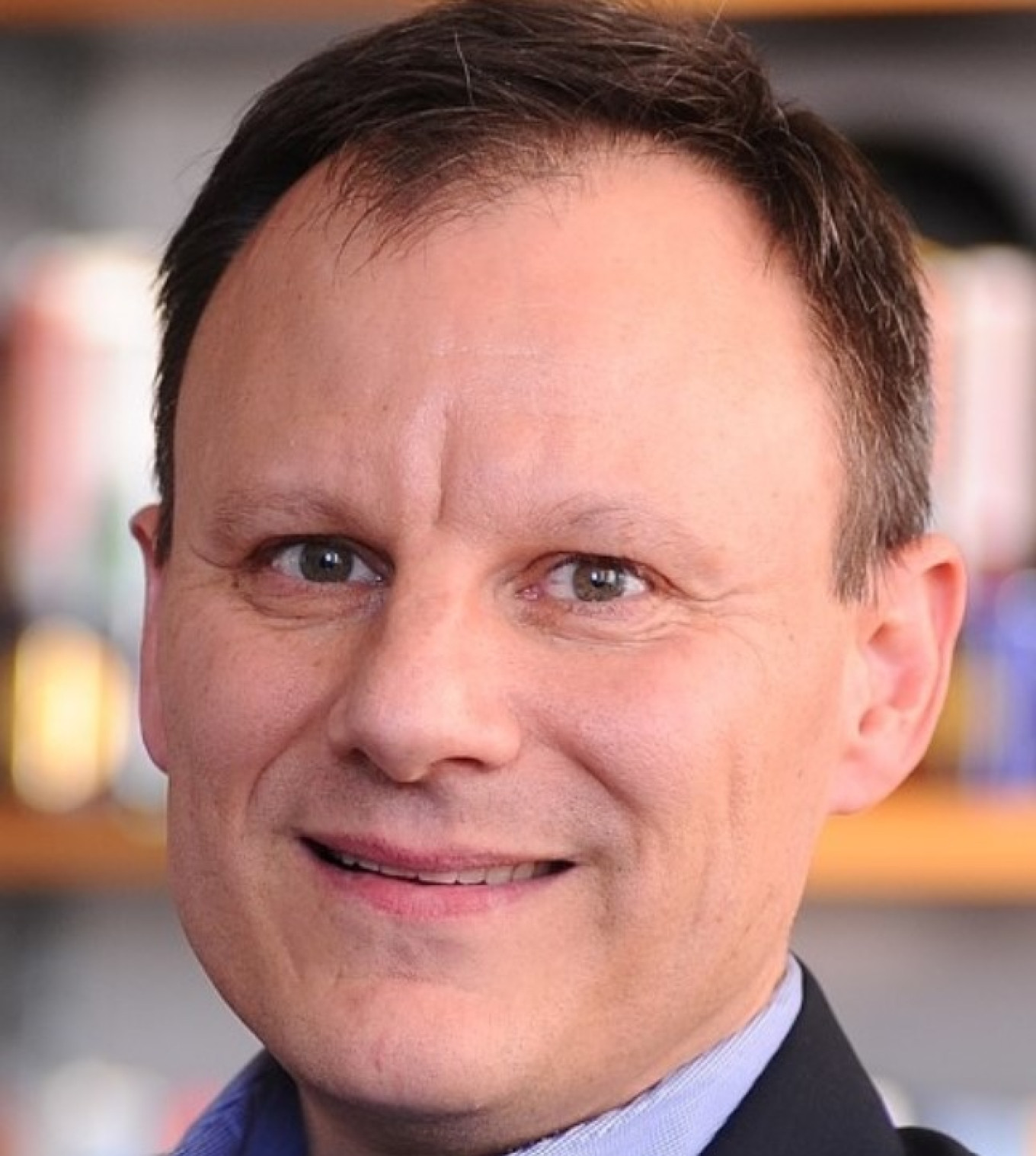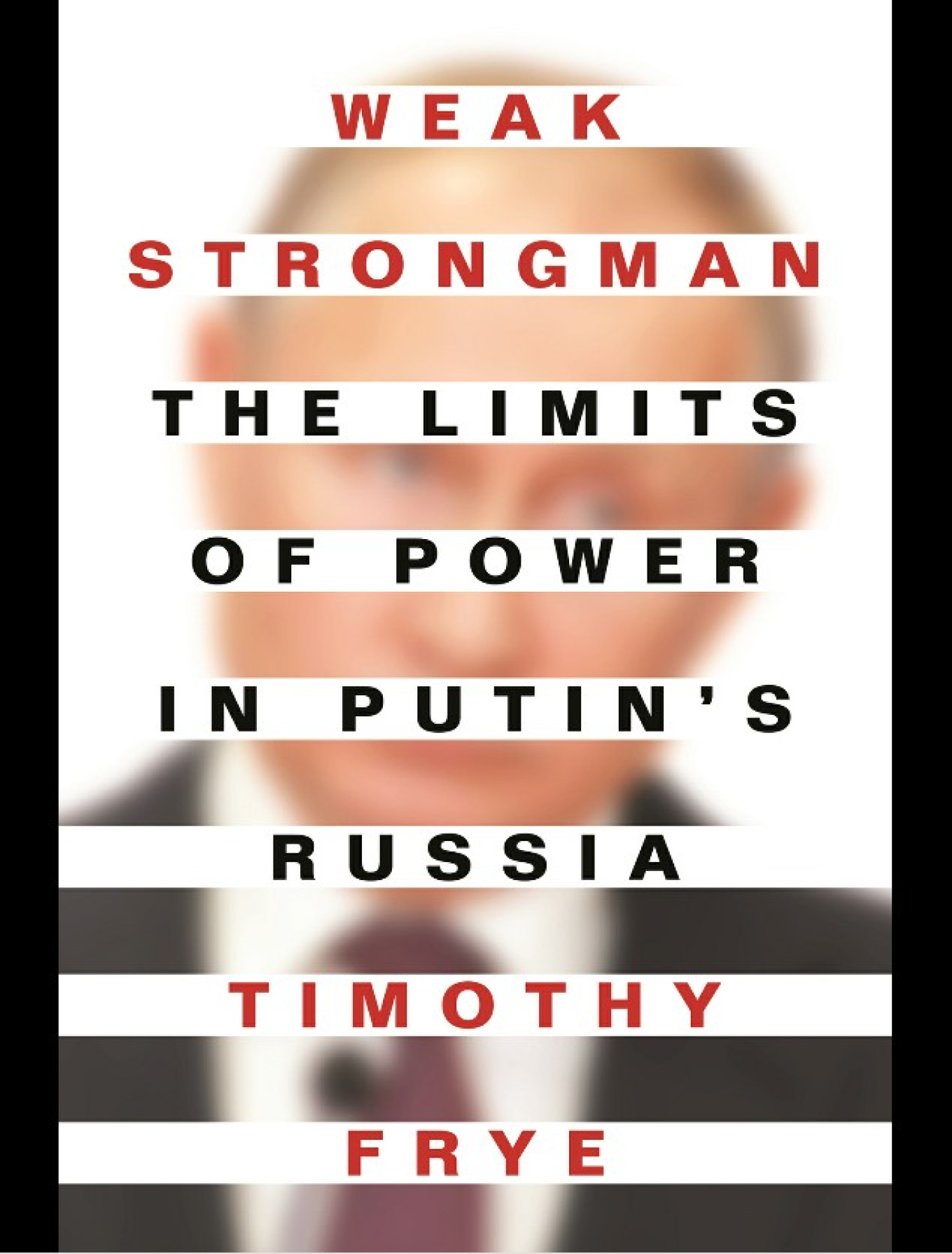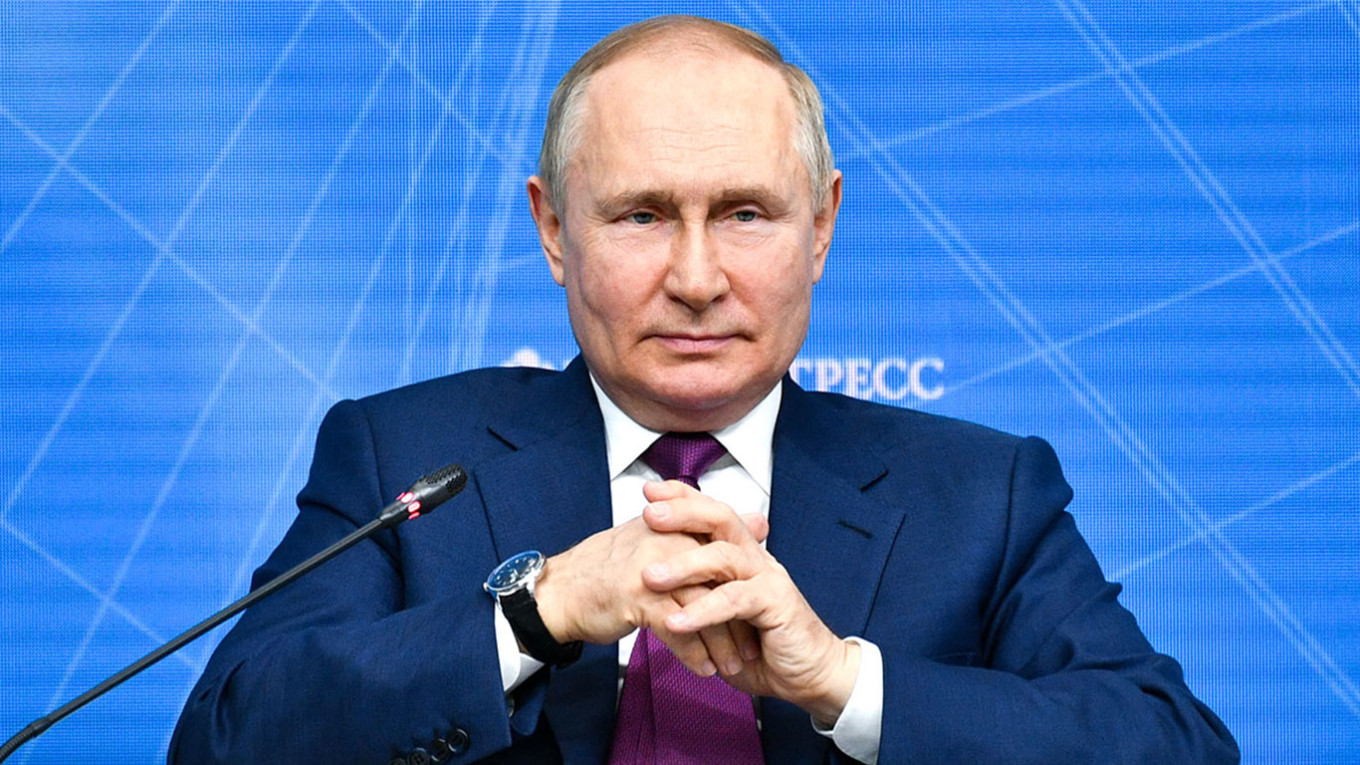Russia’s invasion of Ukraine is often called “Putin’s war,” based on the assumption that Russia’s authoritarian leader has a firm grip on power and virtually single-handedly influences Russian politics. And as the only country to wage a war in Europe in the 21st century, Russia is viewed as an exceptional state that operates by its own opaque and mysterious rules.
Timothy Frye’s book, “Weak Strongman: The Limits of Power in Putin’s Russia,” a 2022 Pushkin House Book Prize nominee, questions those assumptions and takes a closer look at Russia’s political system and Putin’s role. Looking at the regime in the context of other similar authoritarian states and rulers, Frye demonstrates that “even autocrats as influential as Putin face significant constraints and difficult choices over policy because of the nature of autocratic rule.”
Timothy Frye is a political science professor at Columbia University who specializes in comparative politics and political economy. He has had decades of professional and personal experience in Russia, collaborating with Russian scholars varying in age and expertise, teaching at Russia’s Higher School of Economics, and conducting cutting-edge survey-based academic research. This has given him unique qualifications to bridge the gap between scholarship on Putinism and other authoritarian regimes.
“Weak Strongman” starts with the dilemmas Russian president Vladimir Putin faces. Even as he established a personalist autocracy, Putin is not entirely free as a decision-maker. Russia’s ruler is forced to make concessions constantly, his choices are limited, and his attempts to intimidate and appear nearly omnipotent threaten the long-term stability of both Russia and Putin.
Frye lays bare Putin’s paradox of power: by making institutions like the electoral system and the judicial system weak, he denies himself a “safe” landing at the end of his rule and robs Russia of a predictable transfer of power and future development. Frye also pulls back the curtain on the extraordinary effort required to stay in power. Fabricating votes in elections turns out to be far more difficult than a layman imagines. On one hand, the numbers should convince political elites that Putin is still popular with the public but, on the other hand, the numbers shouldn’t be so high that citizens complain about them.

Written and published before the war in Ukraine, “Weak Strongman” is as important — if not more so — today. In the chapter entitled “Great Power Posing,” Frye analyzes the major issues now widely discussed as the war in Ukraine rages: over-reliance on military power, the use of standard anti-western rhetoric typical of autocrats, the trade-off between economic growth and military needs. These and other issues are addressed by Frye in a readable style that combines anecdotes from his own extensive experience in the country with the latest research findings. This is an essential book that unravels the usual thinking about Vladimir Putin and his hold on power.
Weak Strongman: The Limits of Power in Putin's Russia

From Chapter 8: Mysterious Ways
Effectiveness of Media Manipulation
The extensiveness of the Kremlin’s efforts to manipulate media is beyond dispute. One study found that Russian bots (automated accounts that relay Kremlin propaganda, among other things) make up around half of the Twitter posts about Russian politics among the most politically active accounts.40 Yet we should not equate effort with effectiveness. While most laypeople and many commentators believe that people are easy to manipulate, a large body of research suggests it is quite hard. Cognitive scientist Hugo Mercier sums up this view: “Political scientists know how ineffectual political campaigns are. Advertising researchers know that most ads have tiny effects. Historians know that authoritarian propaganda is reviled and mocked by the population (if they can get away with it). Psychologists have catalogued the cues people (as young as preschoolers) take into account when evaluating what they’re told—the plausibility of the content, the quality of the argument, the competence and honesty of the source.” He adds that “most mass persuasion attempts—from propaganda to advertising—nearly always fall on deaf ears.”
Moreover, just being exposed to information doesn’t mean that we are affected by it. Because we select what type of information we consume, it is often difficult to measure the impact of exposure to any particular piece of information. If a politically conservative viewer elects to watch Fox News and then supports Trump, it is hard to know whether their vote for Trump is due to watching Fox News, or because the person holds conservative views and would have voted for Trump even without watching Fox News. More generally, it is not easy to disentangle whether conservatives elect to watch Fox News or people become more conservative because they watch it. The same problem holds for liberals watching MSNBC or Russians watching state television. This “selection” problem is well known to media researchers.
In addition, because we are exposed to so many different types of news, isolating the impact of any bit of news on political behavior is challenging. Voters receive information about politics from friends and family, new and old media, and various partisan groups. It is not easy to know which, if any, of these sources are important. I lived in the hotly contested state of Ohio during the presidential election in 2004 and was contacted twenty-five times by various political organizations in the week before the election even though I had long before chosen my candidate.
We can learn a lot about Moscow’s intentions by studying Kremlin efforts to manipulate information, and these efforts should keep policy makers interested in protecting democracy and national interests awake at night, but this is a different task than identifying whether these attempts are effective. If hours of exposure to state-sponsored media determined citizen loyalty, then the USSR likely would not have collapsed. At the same time, it is hard to imagine that Kremlin efforts to control information do not have significant consequences. Why would the Kremlin be so obsessed with controlling information if it provided so few benefits?
To give some idea of how successful the suppression of free media can be, consider the following study by two Russian and two foreign researchers who gave free access to the independent TV Rain to randomly selected viewers in the run-up to the 2016 parliamentary election. Because access to TV Rain was randomly assigned, the groups of viewers that did and did not receive access were identical in all other respects except for their access to TV Rain. The researchers found that the introduction of free media had a polarizing effect: reducing votes for United Russia in areas where past support for United Russia was low by about 4 percentage points and increasing it in cities where past support for United Russia was high by about 13 percentage points. These are large effects for studies like this and indicate that private media may be especially important in a tightly controlled media environment like Russia. They also hint at how suppressing just one private channel may have altered the political landscape.
The paradigmatic case of Russian media success is the campaign to support the annexation of Crimea. In fall 2013, even prior to the annexation, state media barraged Russian viewers with unrelenting critical coverage of the popular protests against the Ukrainian government. When Ukrainian president Yanukovych fled to Russia in February 2014 and was replaced by a much less Moscow-friendly successor, state television regularly referred to the new government as a “fascist junta”—a loaded term given the Soviet experience in World War II and decades of antifascist propaganda in the USSR. Each demonstration by Ukraine’s politically marginal yet visible and vocal extreme right movements received massive coverage on Russian television. Most egregiously, Russia’s Channel One reported that Ukrainian soldiers had crucified a Russian-speaking child from eastern Ukraine. TV Rain, Novaya Gazeta, and other outlets quickly debunked the story, but Putin mentioned it sometime later. To Russian viewers, state media depicted the reunification of Crimea as a reassertion of Russian power, a noble effort to defend Russian speakers, and a victory over a fascist government.
The astute Russian journalist Maria Lipman and her coauthors observed that on the hot-button issue of Crimea, the Kremlin managed to combine great distortions in reporting without reducing the credibility of the message. They asserted that “contrary to the claim that inaccurate ‘news’ drives viewers away, the raw and aggressive propaganda on pro-Kremlin TV attracted larger audiences than before … not by selling accurate information but emotional gratification. They offer versions of reality that—although not infrequently untrue—made Russians feel good about themselves and their country.” This strategy paid great dividends on Crimea—an issue where there is a deep emotional resonance.
And yet despite a massive campaign in the Russian media, public support for more active measures to defend Russian speakers in eastern Ukraine who are fighting the government in Kyiv is muted. Surveys from the Levada Center indicate that rather than parroting unwavering support for Kremlin policies, the Russian public takes into account the costs and benefits of various courses of action. The annexation of Crimea, a bloodless and largely costless victory for the Russian troops, has received support across almost all sectors of the Russian public. In every month since March 2014, approval of the decision to annex Crimea has never fallen below 80 percent.
But costlier policies in Ukraine occasion much less support. In May 2014, when fighting in eastern Ukraine was hot, only 31 percent of respondents supported, or more or less supported, “sending direct military assistance, such as the introduction of troops.” By August 2015, this figure fell to just 20 percent.
In a July 2015 poll, the Levada Center asked, “If you found out that among the ranks of the insurgents, regular Russian army troops were fighting, how would you respond?” Only 33 percent responded either positively (9 percent) or more or less positively (24 percent). These figures were down from 45 percent in November 2014, thereby indicating a decline in support for the introduction of regular Russian army troops into the conflict in eastern Ukraine. This may help explain why the Russian government has been so reluctant to recognize the presence of Russian soldiers in eastern Ukraine and characterizes those who are fighting there as “volunteers.” By September 2017, just 41 percent of Russians thought that Moscow should help the breakaway regions of Donetsk and Luhansk in eastern Ukraine in any way.
The Kremlin has also been keen to cover up the deaths of Russian “volunteers” in eastern Ukraine. Journalists in Pskov who uncovered fresh graves presumably for Russian soldiers killed in Ukraine were beaten when they tried to investigate the story. The fear of reaction to Russian involvement on a larger scale gives some sense of the limits of the Kremlin’s efforts to manipulate public sentiment even on this hot-button issue. It is just much more difficult to shape opinion on policies that can impose high costs on the public.
More generally, information campaigns that work at home also bring costs abroad. Kremlin denials of the presence of Russian troops in eastern Ukraine play well with viewers in Russia, but they provoke deep skepticism abroad, thus undermining Russia’s credibility. Even more damaging was the Kremlin’s response to the downing of an airliner traveling from Holland to Malaysia that was shot down over eastern Ukraine in 2014, killing 298 passengers, most of whom were Dutch. Following an extensive investigation, Dutch prosecutors in March 2020 charged four Russian citizens who were senior officials in the self-proclaimed Donetsk People’s Republic with organizing the killings.
The Kremlin’s disavowal of responsibility with increasingly less plausible theories worked well at home, where only 2 percent of Russians pointed the finger at the Russian government for the downing of the plane. But in Europe, it only served to harden public opinion against Moscow. While many experts predicted that European sanctions on Russia would not last a year when they were imposed in 2014, lifting the sanctions unilaterally became politically untenable in Europe following the MH-17 downing, and the sanctions remain in place six years on.
Excerpted from “Weak Strongman: The Limits of Power in Putin's Russia” by Timothy Frye, published by Princeton University Press. Copyright © 2021 by Timothy Frye. Reprinted by permission of Princeton University Press. All rights reserved. Footnotes have been removed to ease reading. For more information about the author and this book, see the publisher’s site here.
“Weak Strongman: The Limits of Power in Putin’s Russia” has been shortlisted for the 2022 Pushkin House Book Prize.
A Message from The Moscow Times:
Dear readers,
We are facing unprecedented challenges. Russia's Prosecutor General's Office has designated The Moscow Times as an "undesirable" organization, criminalizing our work and putting our staff at risk of prosecution. This follows our earlier unjust labeling as a "foreign agent."
These actions are direct attempts to silence independent journalism in Russia. The authorities claim our work "discredits the decisions of the Russian leadership." We see things differently: we strive to provide accurate, unbiased reporting on Russia.
We, the journalists of The Moscow Times, refuse to be silenced. But to continue our work, we need your help.
Your support, no matter how small, makes a world of difference. If you can, please support us monthly starting from just $2. It's quick to set up, and every contribution makes a significant impact.
By supporting The Moscow Times, you're defending open, independent journalism in the face of repression. Thank you for standing with us.
Remind me later.






